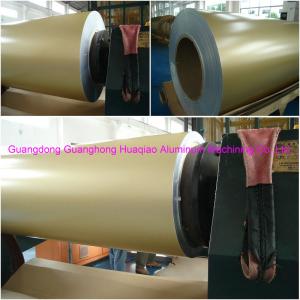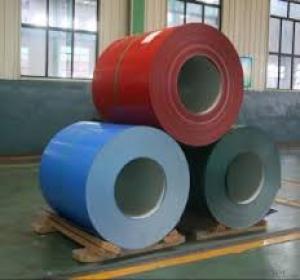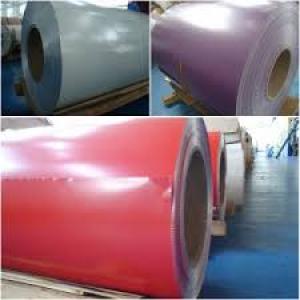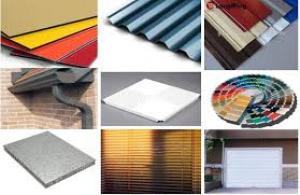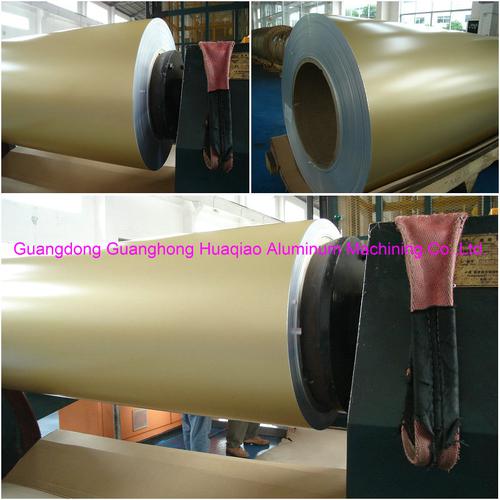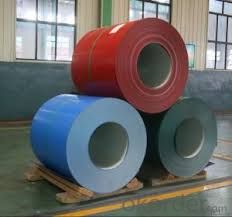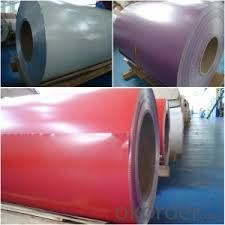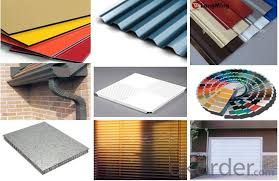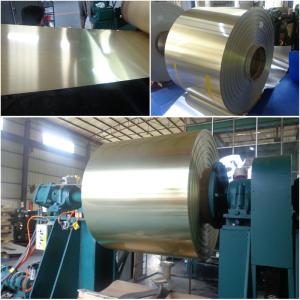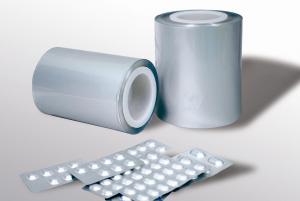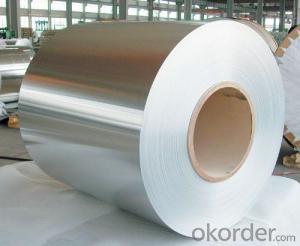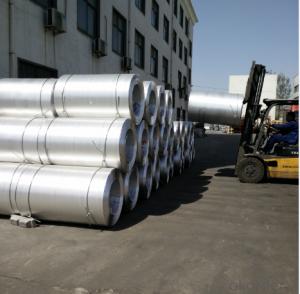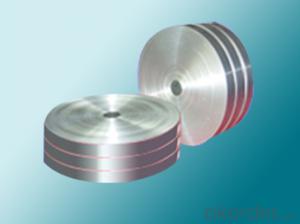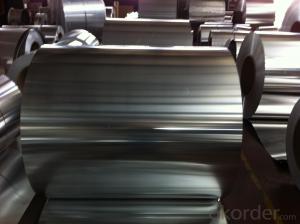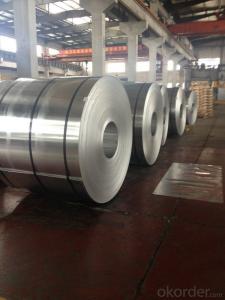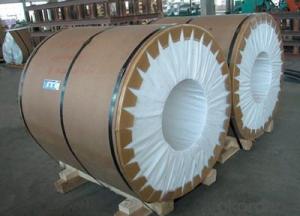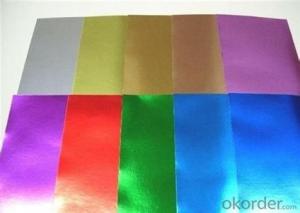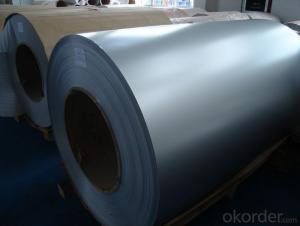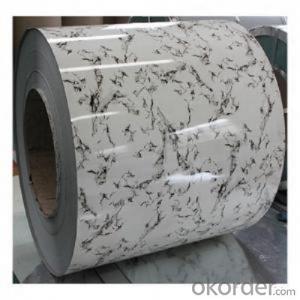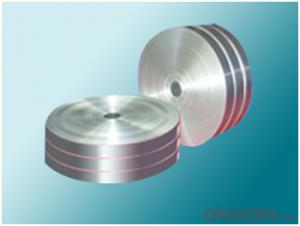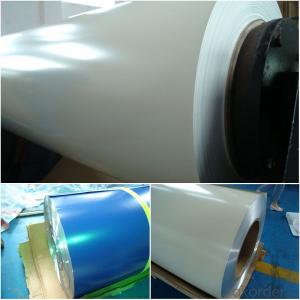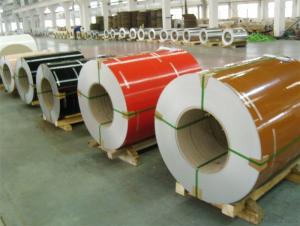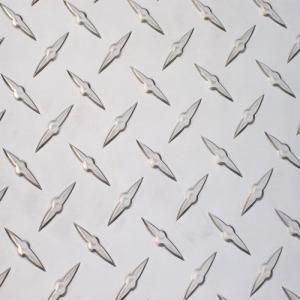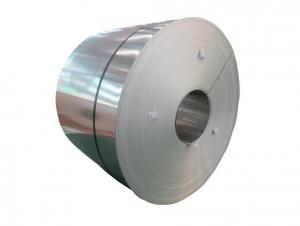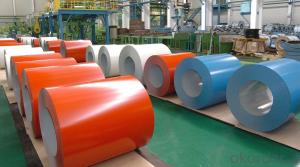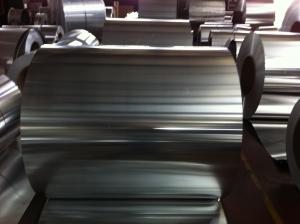Champagne gold color PVDF coated aluminum coils
- Loading Port:
- China main port
- Payment Terms:
- TT or LC
- Min Order Qty:
- 3 m.t.
- Supply Capability:
- 50000 m.t./month
OKorder Service Pledge
OKorder Financial Service
You Might Also Like
Features of PVDF AluminumCoil:
1. Adopting precision rolling coating technology,our PE coated coil can ensure excellent adhesive without coating omission.
2. For the PVDF coated aluminum sheet we produced,there are various colors for your choice.
3. Using infrared heating technology to protectenvironment from pollution.
4. Our coated aluminum coil has four-rollercoating line, uniform coating thickness and good features.
Raw Material of the PVDF Coated Aluminum Coil:
1. Aluminum Coil: high strength aluminum with alloyof AA1100 (aluminum alloy is available with AA3003, AA3005, AA5005 according tocustomer)
2. Surface Paint: PE, PVDF and special paints.
Performance and usage
PVDF coated aluminum coils are specially processedthrough the technics of roller coating and baking with precise paints fromBECKER INDUSTRIAL COATINGS in
Performance of the coating
Aluminum Thickness | Coating Thickness | MEK | T Bend | Impact | Adhesion | Pencil Hardness | Boiling Water Proof |
0.3-1.5mm | ≥25μm | ≥100 Times | ≤2T | 50kg•cm | 0 Grade | ≥HB | no change within 2 hours |
0.15-0.28mm | ≥25μm | ≥100 Times | ≤2T | 20kg•cm | 0 Grade | ≥HB | no change within 2 hours |
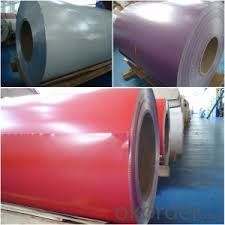
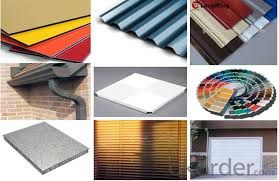
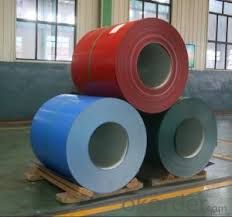
Color of Card
Our PVDF coated aluminum coil is made offluorine carbon resin, pigment, ester solvent after high temperature roastingand baking. The paint of this PVDF coated aluminum coils are solidified to dryfilm with super weather resistance. PVDF coating also can be classified astraditional PVDF and nanometer PVDF coating.
A. Traditional PVDF Coating, with KYNAR500 PVDF and two or three times forcoating and baking, has good properties of anti-acid, anti-alkali and isdurable in atrocious weather and environment, keeping 15 years no unwontedfading. In view of these facts, we recommend this PVDF coated aluminum coilsare applied for external wall cladding.
B. Nanometer PVDF Coating, which different with traditional PVDF, is the clearcoating. It contains nanometer element, which can protect panel from pollution,because nanometer has self-cleaning effect, it is easy to get rid of dust andpollution by raining or water.
Our color Coated Aluminum Coil Characteristics:
-High temperature resistant
-Weathering resistant
-Scrubbing resistant
-Sound insulation
-Acid or alkali proof
-Fireproof
-Light weight material is easy to construct and install
-Bright colors
-Easy molding process,not rusting etc.
PVDF coated aluminum coils Specification:
* substrates: Aluminium (AA 1100, 3003, 3004, 3105, 5006, 5052, 8011, etc), PET, etc.
* Thickness: Alu. 0.08~1.00mm
* Width: Maximum 1590mm
* Colors and finishes: Solid, metallic, stone/wood look, anti-graffiti, anti-static, anti-abrasion, spectra, wrinkle, etc.
* coating systems: Ployester, PVDF, FEVE, Epoxy, Polyamide, Polyurethan, etc.
* Further processing: Strips, cut, emboss, and packing.
IDEABOND color coated aluminium foil combines all advantages of modern coil-coating technology in our full-automatic production line. Our modern production is 4 coated in one with digital precision control, we can created pattern like Wood, stone, graphic as you want. The aluminium substrate gets degreased, chemically pre-treated and coated in a single production step which resulting in a high-quality uniform coatingreproducible at any time and a material which has been developed for easy processing for a variety of application.
- Q: This question asks for a comparison of the benefits and drawbacks of utilizing spring steel wire coils.
- <p>Spring steel wire coils offer several advantages such as high strength and durability, making them ideal for applications requiring resilience and resistance to deformation. They are also known for their excellent elasticity, which allows for consistent performance in dynamic applications. Additionally, spring steel wire coils can be easily formed into various shapes, providing versatility in design and functionality. However, they also have disadvantages, including potential for corrosion if not properly treated, and they can be more expensive than other types of wire due to the material's properties. Furthermore, spring steel wire coils may require specialized tools and equipment for handling and installation, adding to the cost and complexity of their use.</p>
- Q: How much is the 25mm aluminum coil at current market?
- You must mean 25-wide aluminum coil. The price consists of the aluminum ingot price and processing charges. For example, if the processing price is 4500 yuan, it is relatively cheap. 25mm-wide aluminum coil is very narrow, so it will be much complicated to strip.
- Q: Can aluminum coils be used in electrical conductors?
- Aluminum coils can indeed be utilized in electrical conductors. With its exceptional electrical conductivity, aluminum ranks second only to copper in this aspect. Its remarkable electrical properties render it suitable for a wide range of electrical applications, including coil production. In fact, aluminum coils are extensively employed in electrical conductors for various purposes such as transformers, motors, generators, and power transmission lines. These coils possess the advantages of being lightweight, cost-effective, and having good thermal conductivity. Nevertheless, it is crucial to acknowledge that aluminum has a lower tensile strength compared to copper. Therefore, it is essential to carefully consider the design to ensure the stability and durability of the coil. Moreover, it is worth noting that aluminum coils may require larger cross-sectional areas than copper coils to achieve the same electrical performance.
- Q: Can aluminum coils be used in marine environments?
- Yes, aluminum coils can be used in marine environments. Aluminum is a popular choice for marine applications due to its excellent corrosion resistance. It forms a protective oxide layer on its surface when exposed to air, which helps prevent further corrosion. This oxide layer is particularly effective in marine environments where there is exposure to saltwater or high levels of humidity. Additionally, aluminum is lightweight, making it easier to handle and install in marine applications. It is also highly durable and can withstand harsh conditions, including exposure to UV rays and extreme temperatures. Therefore, aluminum coils are commonly used in various marine applications such as boat hulls, shipbuilding, offshore structures, and other marine equipment.
- Q: Explain how aluminum coils impact the manufacturing process.
- <p>Aluminum coils significantly affect the production process by offering versatility and efficiency. They are easily formed, cut, and shaped, which streamlines manufacturing. Their lightweight nature reduces the energy consumption in transportation and handling. Additionally, aluminum coils' corrosion resistance and durability reduce waste and the need for frequent replacements, enhancing sustainability. They also contribute to the production of various products, such as automotive parts, construction materials, and packaging, by providing a consistent and high-quality material.</p>
- Q: How are aluminum coils used in the production of air ducts?
- Aluminum coils are commonly used in the production of air ducts as they offer superior heat transfer and corrosion resistance properties. These coils are typically formed into a specific shape and size, allowing for efficient airflow and distribution of air throughout the duct system. The aluminum material is lightweight, making it easier to handle during installation, and its durability ensures a long lifespan for the air ducts. Additionally, the coils can be easily customized to meet specific requirements, such as insulation or noise reduction. Overall, aluminum coils play a crucial role in the manufacturing of air ducts, contributing to their functionality, efficiency, and longevity.
- Q: Can aluminum coils be used for radiation shielding?
- Yes, aluminum coils can be used for radiation shielding. Aluminum is a commonly used material for radiation shielding due to its high atomic number and density, making it effective at absorbing and scattering radiation. Aluminum can effectively shield against a wide range of radiation types, including gamma rays and X-rays. Additionally, aluminum is a lightweight and malleable material, making it easy to work with and suitable for various applications where radiation shielding is required, such as in medical imaging, nuclear power plants, and aerospace industries.
- Q: Can aluminum coils be utilized as an insulating material?
- <p>Aluminum coils are not typically used for insulation. They are good conductors of heat and electricity, which makes them unsuitable for insulation purposes. Insulation materials should be poor conductors to prevent the flow of heat or electricity. Aluminum coils are more commonly used in applications where conductivity is desired, such as in electrical wiring or heat exchangers. For insulation, materials like fiberglass, mineral wool, or plastic foams are used because they resist heat flow effectively.</p>
- Q: How do aluminum coils impact energy efficiency?
- Aluminum coils have a significant impact on energy efficiency due to their excellent heat transfer properties. They are commonly used in air conditioning systems and heat pumps as they enhance the heat exchange process, allowing for faster and more efficient cooling or heating. The high thermal conductivity of aluminum ensures that the system operates effectively, reducing energy consumption and increasing overall efficiency.
- Q: How can you tell the difference between aluminum and other non-magnetic metals, such as what I've heard called, pot-metal?
- Well there's many ways to do this but I would think the easiest way would be to weigh the two metals and aluminum will be lighter.
Send your message to us
Champagne gold color PVDF coated aluminum coils
- Loading Port:
- China main port
- Payment Terms:
- TT or LC
- Min Order Qty:
- 3 m.t.
- Supply Capability:
- 50000 m.t./month
OKorder Service Pledge
OKorder Financial Service
Similar products
Hot products
Hot Searches
Related keywords
